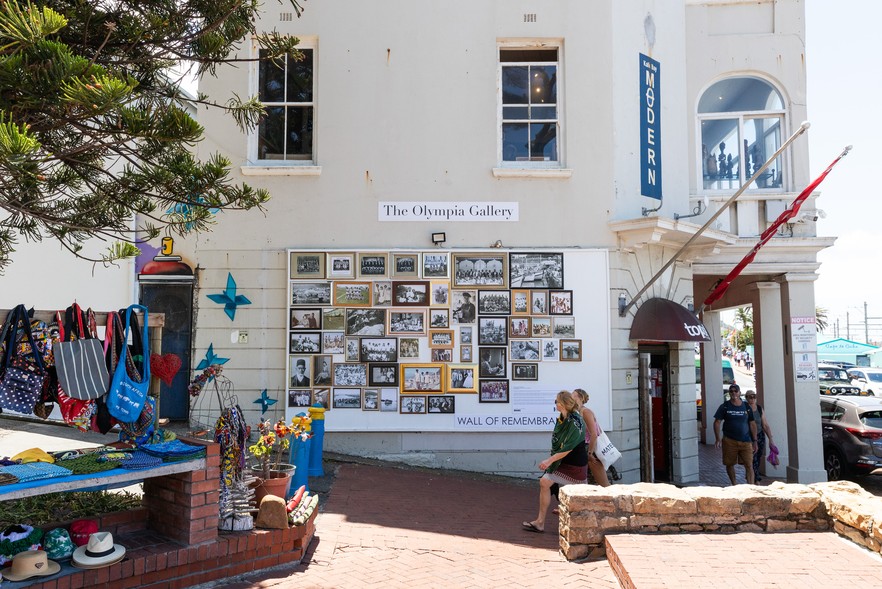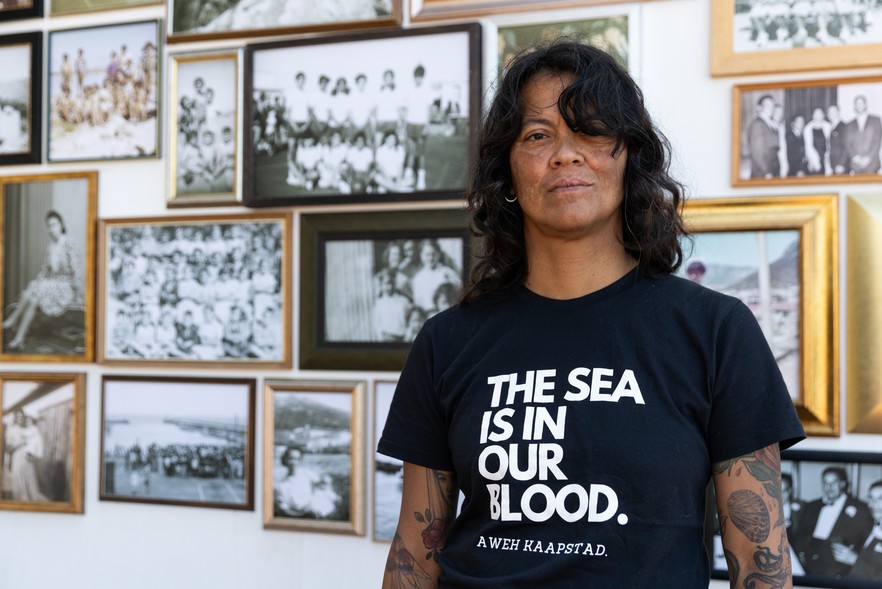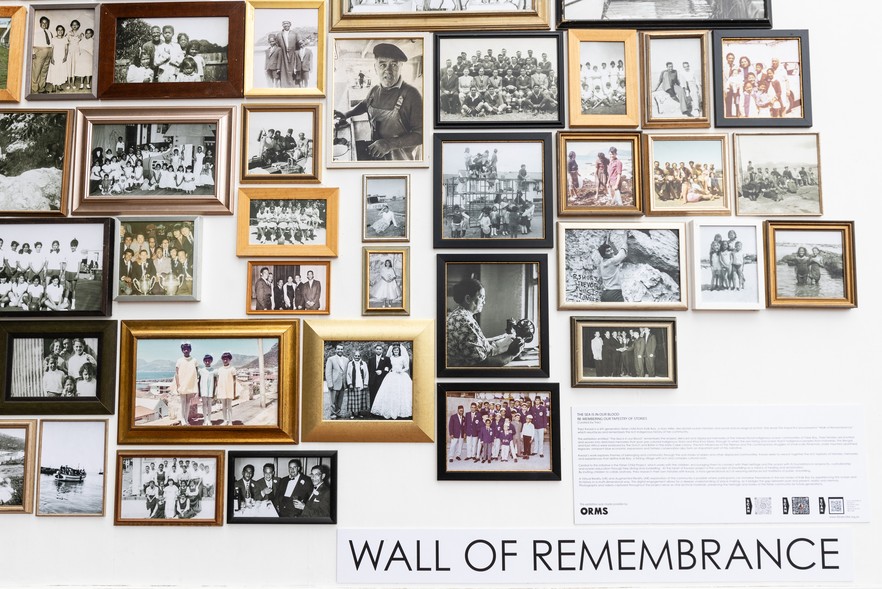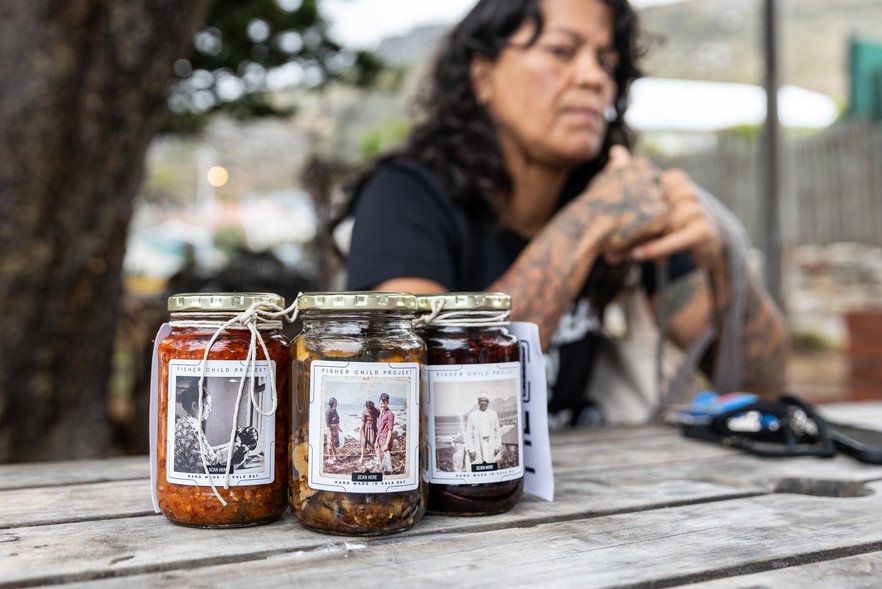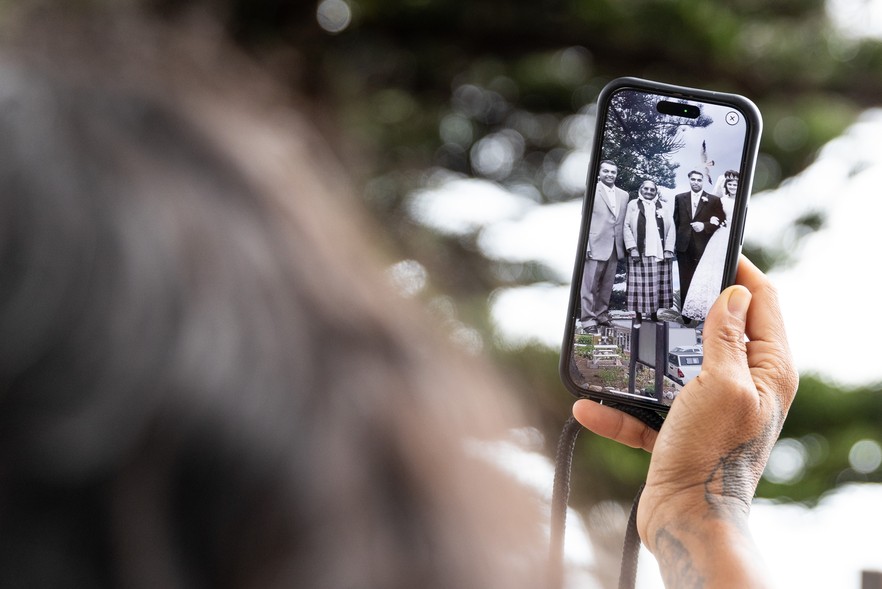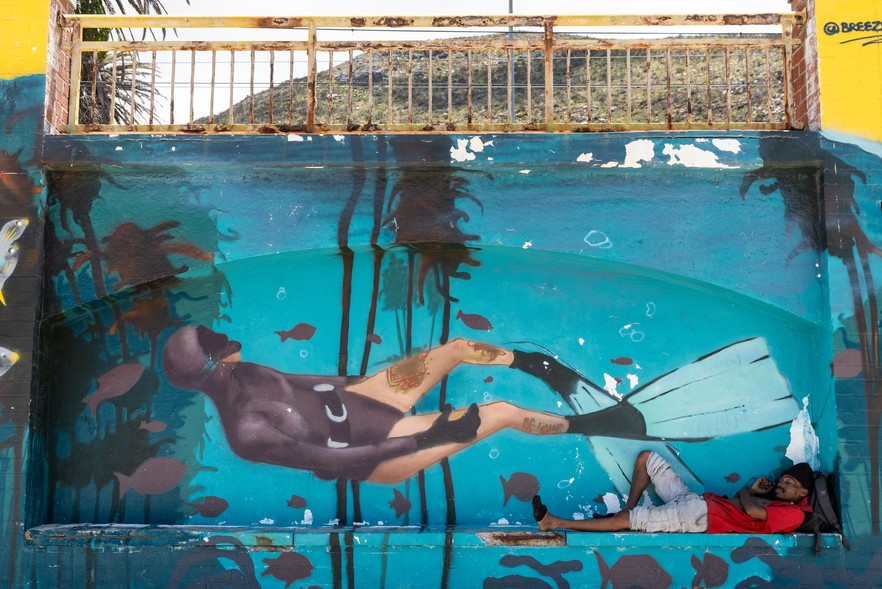Photo exhibition: Remembering the fishers of Kalk Bay
“The Sea is in our Blood” photo exhibition outside the Olympia Cafe
“The Sea is in our Blood” exhibition at the Olympia Gallery in Kalk Bay displays historical photographs of the indigenous fishing community.
For years, the history of the fishing community in Kalk Bay has largely been forgotten. But a local fisher woman whose family has relied on the sea for generations is trying to change this with a public exhibition.
The wall outside the Olympia Cafe on Kalk Bay’s busy main road is plastered with photographs, some dating back to the 1920s, of families who have lived in the community for several generations and have made their livelihoods from the ocean.
The “The Sea is in our Blood” exhibition was curated by storyteller, historian, and sixth generational fisher Traci Kwaai. It features photographs of families including the Schouws, Sasmans, Fortunes, Erispes, Daniels’, Kalans, Fishers, Ferreiras, Jacobs. The exhibition, on display for about a month, records the history of the fishing people of Kalk Bay.
“The kids and the people that live here walk down and they can see their families,” says Kwaai.
The “The Sea is in our Blood” exhibition was curated by sixth generational Kalk Bay fisher Traci Kwaai.
“Even though we’re being erased, it doesn’t mean we need to be forgotten,” said Kwaai. “Lots of people stop there and they look, they read, and they say: ‘We didn’t know there was a fishing community here’.”
Thousands of families were forcibly removed from Simon’s Town and Kalk Bay under the apartheid government’s Group Areas Act and moved to the Cape Flats. Only a few fishing families remained, and still live, in Kalk Bay.
Kalk Bay is now a predominantly white and gentrified neighborhood, with housing prices that have skyrocketed, making the area largely unaffordable to many people who used to live there.
Kwaai said: “I wanted other people, brown people, who are not from Kalk Bay, to look at these photos and see themselves — to see their aunties and uncles.”
The exhibition features photos of families and sports clubs dating back to the 1920s.
Kwaai included photos from old sport clubs, like the Marines and Excelsior rugby clubs, netball, swim team, soft ball league, and even a thriving dart club.
Kwaai also founded the Fisher Child Project, which offers free diving and snorkelling lessons to young people mostly from the surrounding communities, while educating them about their heritage and the ocean.
Some of the jars sold by the Fisher Child Project. People can scan the images with their cellphones and be taken on a virtual history tour on the App.
Another initiative by the Fisher Child Project is a virtual storytelling tour through some of the lesser-known history of the Kalk Bay community, narrated by children involved in the project. It begins when you scan a photograph on a jar of preserves, such as sour figs or atchar. “It’s a play on words,” said Kwaai, as the initiative is about preserved heritage and preserving stories.
Kwaai hopes to install tiles in popular spots like the iconic fish and chips shop Kalky’s, so that people can scan the image on the tile to listen to the fishing community’s history.
The Fisher Child Project is a virtual storytelling tour available to download on most smartphones.
The Fisher Child Project is raising funds and donations to expand its augmented reality project, with the hope of taking the project into schools.
For years Kwaai has led the Walk of Remembrance, an oral storytelling journey spanning 300 years, from enslavement, post-slavery, and then apartheid. “It is what this tiny fishing community has endured over centuries, but we’re still here,” she says.
A mural showing Traci Kwaai who teaches young people to snorkel and free dive.
Support independent journalism
Donate using Payfast

Don't miss out on the latest news
We respect your privacy, and promise we won't spam you.
Next: Anger over failure of community-owned macadamia nut farm
Previous: Former Lottery executive loses court bid to access his pension
© 2025 GroundUp. This article is licensed under a Creative Commons Attribution-NoDerivatives 4.0 International License.
You may republish this article, so long as you credit the authors and GroundUp, and do not change the text. Please include a link back to the original article.
We put an invisible pixel in the article so that we can count traffic to republishers. All analytics tools are solely on our servers. We do not give our logs to any third party. Logs are deleted after two weeks. We do not use any IP address identifying information except to count regional traffic. We are solely interested in counting hits, not tracking users. If you republish, please do not delete the invisible pixel.

